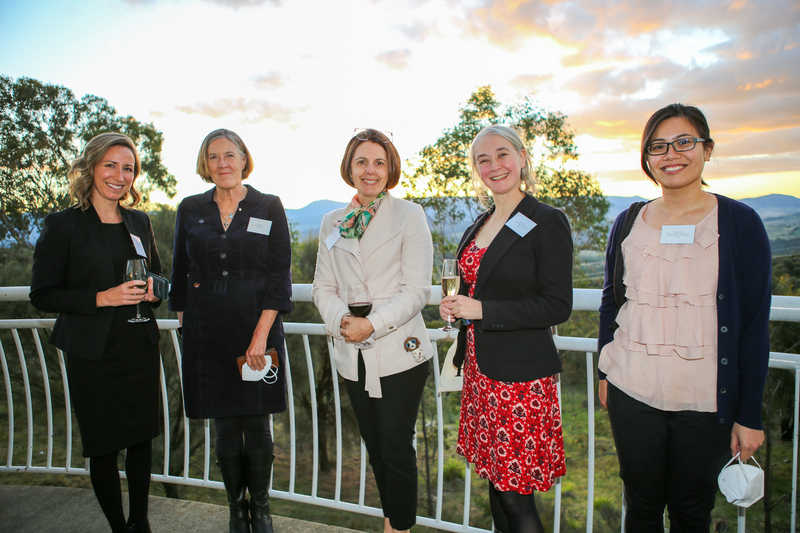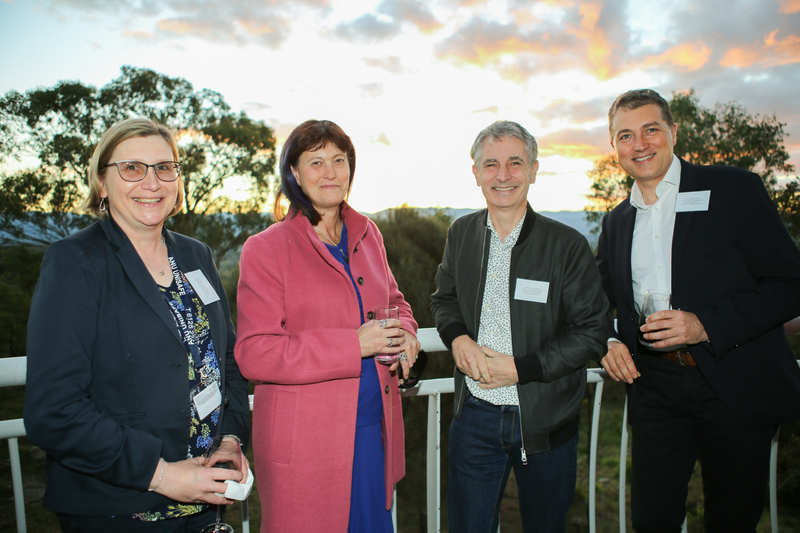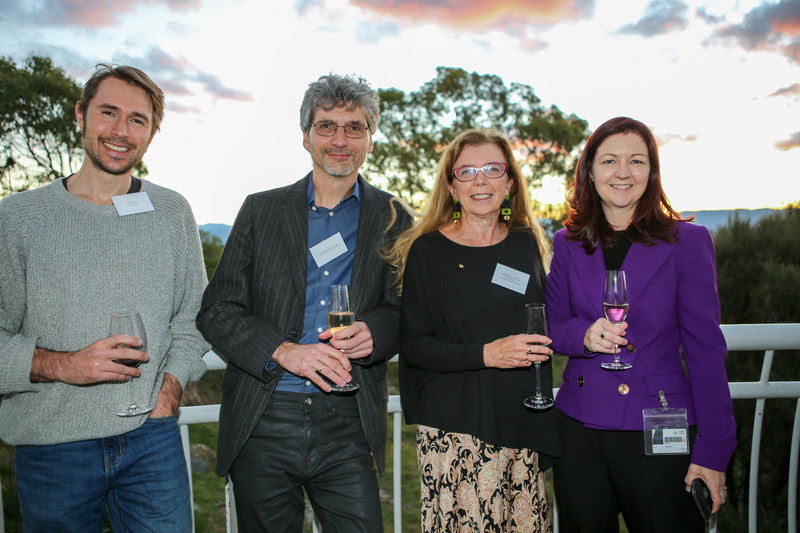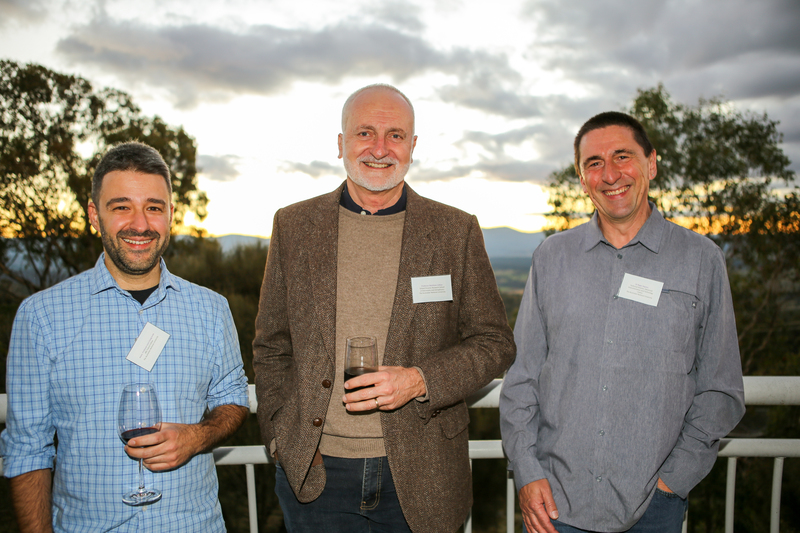In 2017, the ASTRO 3D set an ambitious goal of achieving 50% women by the end of 2021. We achieved this milestone across our 290-person Centre in March 2022, including 56% women postdocs and 55% women students, through a series of recruitment, retention and culture change initiatives.
On 13 April, we celebrated this remarkable achievement at the Mount Stromlo Observatory Visitor Centre. There was a great turnout with many ASTRO 3D node members, including some from Melbourne and Sydney and many leaders in the scientific community in attendance, including ANU Vice Chancellor Professor Brian Schmidt, Academy of Science CEO Anna-Maria Arabia, representatives from the SAGE program, and the Australian women in STEM Ambassador’s Office, Directors and Deans from across the ANU campus, and our advisory board members Sue Weston and Bobby Cerini.

From Left: Isabelle Kingsley (UNSW), Sue Weston (Comcare), Anna-Maria Arabia (AAS), Tamzen Armer (SAGE), Mei Leo (SAGE) (Photo: Cristy Roberts)

From Left: Prof Ute Roessner (ANU), Liz Visher (ARC), Prof Stu Wyithe (ASTRO 3D UniMelb), Prof Dragomir Neshev (TMOS ANU) (photo: Cristy Roberts)

From Left: Richard Barry (Astronomy SKA), A/Prof Christian Wolf (ANU), Prof Ann McGrath (ANU), Prof Lisa Kewley (ASTRO 3D ANU) (photo: Cristy Roberts)

From Left: A/Prof Luca Casagrande (ANU), Prof Matthew Colless (ANU), Dr Roger Haynes (AITC, ANU) (photo: Cristy Roberts)
We had speeches by the ARC Director, Large Investments Liz Visher and Brian Schmidt, followed by a presentation by our Director, Professor Lisa Kewley on how we achieved 50:50, with a focus on how to do balanced recruitment as well as building a positive culture.

Professor Lisa Kewley (photo: Isabelle Kingsley)
During the coming weeks, Lisa will be preparing what we have learned into an article to be submitted to Nature Astronomy to share what we have learned and achieved with the broader academic community.
At ASTRO 3D we are very proud of the tremendous job we’ve done in building a culture that embodies our Centre values. We now look to shift gears to focus on continuing to improve the support for and representation of astronomers from other under-represented groups, including indigenous astronomers.
Congratulations! It’s great to have these examples to show others that it is possible to make rapid gains on gender equity with the right plan and commitment. We should not have to wait a generation or more to achieve such outcomes!
Congratulations! Thanks for blazing a trail to show us that gender equity can happen in 5 years! Wonderful achievement from a fantastic leadership team!